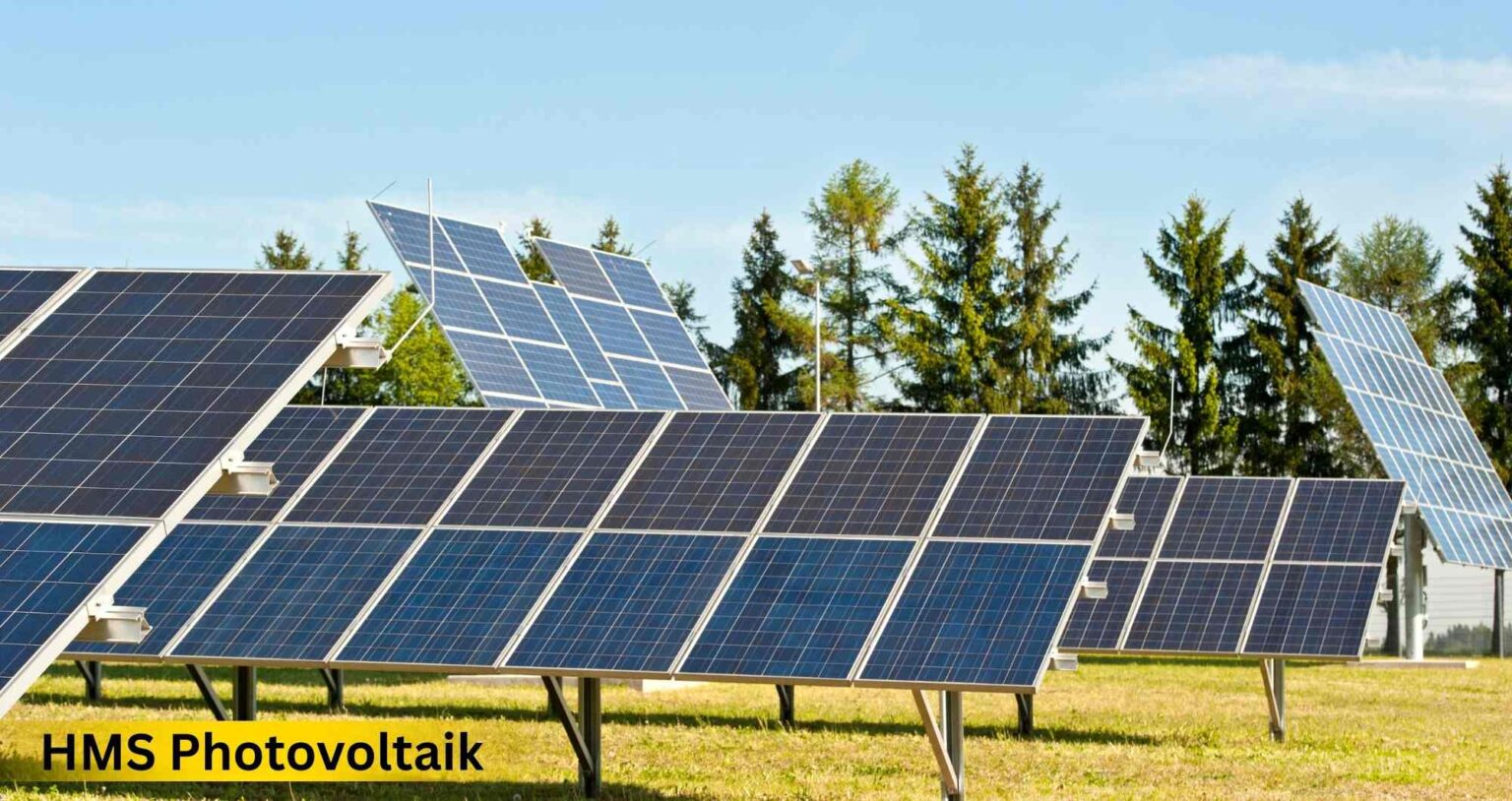Imagine standing at a harbor, watching a sleek ship glide across the water without the usual smoke, vibrations, or roar of diesel engines. Instead, it moves silently, powered by nothing more than sunlight captured on its shimmering decks. This is not science fiction, it’s the promise of HMS Photovoltaik, a new generation of ships that integrate photovoltaic technology into their very design. By harnessing solar energy at sea, these vessels are redefining what sustainable shipping looks like.
Maritime transport is responsible for nearly 3% of global greenhouse gas emissions. With stricter international regulations and rising fuel costs, the pressure to innovate has never been higher. HMS Photovoltaik stands out as more than a concept; it’s a symbol of what happens when engineering meets clean energy vision. Let’s dive into how this solar-powered revolution is shaping the oceans.
What is HMS Photovoltaik?
At its core, HMS Photovoltaik refers to a new wave of shipbuilding where solar power plays a central role in propulsion and onboard energy systems. Instead of treating solar panels as an afterthought, these vessels integrate them into their hulls, superstructures, and sometimes even sails. The result is a ship that maximizes surface area for sunlight capture while reducing reliance on fossil fuels.
The name itself blends tradition with innovation, “HMS” reflects classic naval naming, while “Photovoltaik” emphasizes renewable energy. Unlike conventional vessels that depend almost entirely on fuel, Photovoltaik ships combine solar arrays, battery banks, and hybrid propulsion systems. Some designs even work alongside hydrogen fuel cells or wind-assist technologies.
This rethinking of shipbuilding is more than cosmetic. It’s about designing vessels from the ground up to operate efficiently, reduce emissions, and create a quieter, cleaner presence at sea. For coastal ferries, research vessels, and even luxury yachts, the concept is already proving practical.
How Photovoltaik Technology Works at Sea
Making solar energy reliable on water is not as simple as installing panels. HMS Photovoltaik ships employ a layered system of technologies to ensure power is consistent even in cloudy or stormy conditions. Large areas of marine-grade photovoltaic panels are spread across decks and superstructures, capturing as much sunlight as possible.
This energy is then stored in advanced lithium-ion or solid-state batteries, which can power propulsion systems, navigation equipment, lighting, and passenger amenities. When solar input dips, a smart energy management system steps in, balancing power between batteries, backup engines, or alternative fuels.
Hull designs are optimized to reduce drag, meaning the vessel requires less energy to move in the first place. Some ships even feature hybrid solutions, using wind sails or rotors to assist propulsion. Together, these innovations create a reliable, resilient power system that takes advantage of every ray of sun the ocean provides.
Key Technologies Behind HMS Photovoltaik
The backbone of HMS Photovoltaik lies in the synergy of several cutting-edge technologies. First, marine-grade solar panels are built with salt-resistant coatings and flexible materials to withstand harsh sea conditions. Unlike rooftop solar, these panels endure constant UV exposure, spray, and vibrations.
Next comes the battery system. Modern vessels use large arrays of high-density lithium-ion or emerging solid-state batteries that hold enough charge for extended operations. These batteries don’t just power propulsion, they also keep navigation systems, air conditioning, and onboard electronics running smoothly.
Equally important is the energy management software. Think of it as the ship’s brain. It predicts solar input based on weather forecasts, calculates the best use of stored energy, and ensures efficiency. Combined with automation and predictive routing, the ship can adjust course or speed to optimize energy use. This “smart” approach makes Photovoltaik vessels more than just floating solar farms, they’re intelligent, adaptive machines.
Advantages of HMS Photovoltaik for Maritime Industry
Why should shipping companies or governments invest in Photovoltaik vessels? The benefits are hard to ignore. First, emissions drop dramatically. By replacing a portion of diesel fuel with solar, these ships release fewer greenhouse gases, sulfur oxides, and particulates into the air. For port cities suffering from air pollution, this is a game changer.
Second, operating costs decrease over time. While the upfront investment in solar panels and batteries is high, fuel savings quickly offset it. Owners also save on maintenance, since electric propulsion reduces wear compared to traditional engines.
Noise reduction is another major perk. Solar-electric ships are significantly quieter, which benefits marine life and makes port operations less disruptive. On top of that, hybrid energy systems make vessels more resilient to fuel shortages or price spikes. Simply put, HMS Photovoltaik offers cleaner, quieter, and cheaper shipping.
Real-World Use Cases of Photovoltaik Ships
Though the idea sounds futuristic, HMS Photovoltaik ships are already being tested and deployed in niche markets. Ferries running predictable routes are prime candidates. For example, coastal passenger ferries can rely on daytime solar energy and use batteries at night. This reduces not only emissions but also fuel bills for operators.
Research and survey vessels also stand to benefit. Scientists conducting marine studies need quiet ships to avoid disturbing ecosystems. Solar-powered designs provide low-noise propulsion, making them perfect for sensitive environments.
Luxury yachts have quickly embraced solar integration. Owners appreciate the silent cruising experience and the green credentials that come with it. Even harbor workboats and pilot boats, which operate in short bursts, find solar systems efficient.
These use cases show that HMS Photovoltaik isn’t limited to experimental prototypes, it’s already carving a role in real maritime operations.
Challenges and Limitations of HMS Photovoltaik
Of course, the transition to solar-powered shipping isn’t without hurdles. The biggest challenge is space. Ships only have so much surface area for solar panels, and energy density remains limited compared to fossil fuels. This means that while ferries and small vessels are viable, large transoceanic cargo ships can’t run solely on solar, at least not yet.
Another issue is cost. High-performance photovoltaic panels, batteries, and integration systems require significant upfront investment. While lifecycle savings are strong, smaller operators may find it hard to finance the transition without government incentives.
Maintenance in marine environments is another obstacle. Salt spray, storms, and biofouling can reduce panel efficiency over time, requiring constant care. Finally, energy storage technology, while improving, still struggles to match the massive power needs of container ships. Despite these barriers, progress continues at a rapid pace.
Environmental and Economic Impact of Solar-Powered Ships
The environmental case for HMS Photovoltaik is compelling. Maritime shipping currently contributes heavily to air pollution and climate change. Even partial adoption of solar power can cut nitrogen oxides, sulfur oxides, and particulate emissions in busy coastal regions. This leads to cleaner air for port cities and healthier oceans for marine ecosystems.
On the economic side, Photovoltaik ships reduce dependence on volatile fossil fuel prices. Operators can lock in predictable costs by generating their own energy. Many governments and financial institutions are also offering green subsidies, loans, and port fee reductions for low-emission ships.
In essence, solar-powered vessels are not just eco-friendly, they’re financially strategic. Companies that adopt this technology position themselves ahead of stricter global regulations while appealing to consumers and partners who demand sustainability.
The Future of HMS Photovoltaik and Sustainable Shipping
Where does the journey go from here? The future of HMS Photovoltaik lies in scaling and integration. Expect smaller vessels, like ferries, yachts, and workboats, to lead the way, followed by retrofitting existing ships with hybrid solar solutions. Over time, advances in solar efficiency and battery density will make larger ships viable.
Researchers are also experimenting with pairing solar with hydrogen and ammonia fuel systems. Together, these technologies could power long-range cargo vessels with zero emissions. Regulations from the International Maritime Organization and regional governments will likely accelerate adoption, making Photovoltaik ships less of an option and more of a requirement.
As technology costs drop and efficiency improves, the idea of silently crossing oceans on solar power doesn’t feel far-fetched. Instead, it feels inevitable, a glimpse of a cleaner maritime future.
FAQs About HMS Photovoltaik
1. Can a ship run entirely on solar power?
Not for large cargo ships yet. Smaller vessels like ferries or yachts can rely mostly on solar, but ocean-crossing giants need hybrid solutions with batteries, hydrogen, or wind assist.
2. How much energy can solar panels provide on a ship?
It depends on surface area and efficiency. On smaller vessels, solar may cover most daily energy needs, while on large ships, it often supports auxiliary systems and reduces fuel demand.
3. Are marine solar panels durable in harsh conditions?
Yes. Marine-grade panels are designed with anti-corrosive coatings, UV resistance, and strong mounts. Regular cleaning and inspections are necessary for peak performance.
4. What are some real examples of Photovoltaik ships?
Several ferries in Europe and Asia already integrate solar panels. Luxury yachts and research vessels are also adopting solar-electric propulsion for cleaner operations.
5. What makes HMS Photovoltaik different from hybrid ships?
Hybrid ships usually rely on a mix of diesel and electric engines. HMS Photovoltaik, on the other hand, is designed from the ground up to prioritize solar energy as a primary power source.


